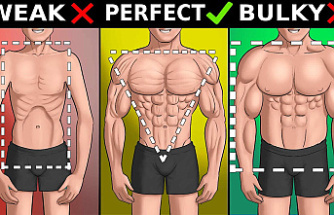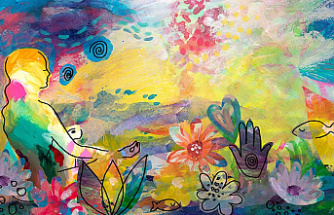It is difficult to watch the videos.
One video shows a man hanging from an Oklahoma City bridge, his legs flailing midair, as police grab his arms to pull him off the edge. Another shows a woman hanging high above Los Angeles Harbor while a dozen officers drag her up the side of a bridge. Just before they grab her and place handcuffs on her, panicked cops yell, "We got your back, we got you!"
These short clips were posted to official law enforcement social media accounts. This is part of a long-standing practice of police agencies to show their lifesaving efforts online, especially in 2021, as desperation grows for positive news amid accusations of racism and excessive force following George Floyd's death and rising gun violence.
Experts and advocates are now focusing their attention on officer interactions when dealing with individuals with mental health issues.
Kevin Berthia, a mental healthcare advocate and survivor of his suicide attempts, said that it was like "living in this tragedy together." "Now, how can that not create trauma for anyone else?" This is what triggers it.
These posts can be found on Facebook, Instagram, and Twitter. They may be uploaded by police departments across the country without permission from the person in crisis. However, their identities will not be revealed.
Debbie Plotnick, vice president for state and federal advocacy at Mental Health America, reviewed a half-dozen from around the country.
She said that they had helped a person get down, which is admirable, but she added that she doesn't believe this has any value for people's mental health.
Although police claim that mental health is their top priority, the footage seems to show a very different story. The harrowing, dangerous work of fighting crime, saving lives and protecting people has been a hallmark of law enforcement agencies for a long time. The feeds include videos of officers giving birth, acts of kindness, and showing strength.
Along with photos of smiling officers, the New York Police Department often tweets captions. These captions include details such as the exact location of a person's jump or how many pills they took before being "rescued" by officers. Videos from the scene are also included in other posts.
Yet the American Association of Suicidology specifically suggests that any reporting on suicide or suicide attempts not include the method or location. Even if the identity of the victim is hidden, the association suggests that photos and videos taken from the scene be excluded.
The NYPD declined to comment.
Experts fear copycats. They say such detailed posts, like the Los Angeles Police Department's recent posts that included body-cam footage showing the suicide attempt of the woman on the bridge, give vulnerable people a guide.
"Here's a spot on the bridge where it literally took like six uniformed police officers to drag this person back over the side," said Jonathan Singer, president of the American Association of Suicidology.
Although the LAPD declined to comment on the matter, it stated in a statement that they do not have a policy. Although the agency stated that it strives for identity protection, it does not usually seek permission to do so.
The 55-second video was posted on Instagram, Twitter, and Facebook less than a month following the incident. Police were called to the bridge at San Pedro after the woman was spotted climbing up the side. The scene is full of tension: rushing wind, panicked breathing, the clicking and clicking of handcuffs, radios echoing off of the bridge's metal, and the sound of the radios echoing off of it all.
"Great teamwork resulted in her receiving the help she needed," the LAPD's posts said, with a link to the National Suicide Prevention Lifeline's website. Remember that you're not alone and there's always help.
Oklahoma City police posted a May overpass video to their Facebook page. It includes body-cam footage as well as interviews with officers. Although the man's face has been blurred, the department didn't ask him permission to post the video.
The final clip shows the man being loaded into a police cruiser with the text: "After rescuing the man, officers took him to the hospital and started the process of getting him the help he needed." The phone number of the National Suicide Prevention Lifeline follows.
Master Sergeant. Gary Knight, spokesperson for Oklahoma City Police Department said that the aim was to show residents how officers saved the man's lives during the two-hour incident.
Knight stated that the last thing Knight wants to do is prevent someone's recovery from being in crisis. Knight said, "We are not here to make someone's situation worse." We came to help this person.
Daniel Reidenberg, executive director of the Minnesota-based Suicide Awareness Voices of Education, said such social media posts may actually deter viewers from calling 911, for fear they might also get handcuffed or arrested.
He said, "It's just too complicated to be reduced into a video like this."
Ronnie Walker agrees. Her stepson died by suicide when he was a college junior, prompting her to form a now-international support group and online forum for other grieving families, the Hawaii-based Alliance of Hope For Suicide Loss Survivors.
She said that it was "really devastating for everyone who knew and loved" him, speaking on the 26th anniversary her stepson's passing. "It was like a grenade went off within our family, and everyone was hurt, each in their own ways."
Walker stated that looking at police posts could be very traumatizing for suicide victims.
She said, "I don’t want to discount the heroism and kindness of the police officers." "Some of the videos don't portray that or convey that to me," she said. It's just more sensational.
Appleton, Wisconsin's police department -- which is 74,000 people north of Milwaukee -- used a different approach. The eight-minute suicide intervention video, which is less explicit than other videos, was the result of nearly a month-long discussion. They sought permission from the man in crisis, his family, and people who worked with mental health agencies.
Is this going to have a positive impact on our community? "Is this going to actually cause the conversations we want to have around mental health?" Lt. Meghan cash said. Or is this just a clip?
Recent years have seen officials responsible for so-called suicide hotspots like San Francisco's Golden Gate Bridge or the George Washington Bridge that connects New York City to New Jersey have tried to implement prevention and deterrent systems.
Around 30 people commit suicide each year on the Golden Gate Bridge. Another 150 people attempt to end their lives there every year. Many come in contact with the 36 members of the bridge patrol -- whose captain, David Rivera, hopes new conversations around mental health, like Simone Biles' discussions at the Olympics, will encourage people to get help.
Rivera's police department doesn't publish publicly information about suicide interventions. Instead, it chooses to honor its members and other officers who may have been involved with rescues like bridge ironworkers and road staffers.
Rivera stated, "We can recognize them" and would like to write a commendation.
Berthia, a mental health advocate, was on the bridge in 2005 to end his own life. In a photograph published by The San Francisco Chronicle, Berthia was photographed crossing the railing with a California Highway Patrol Officer. He has kept the image in his heart for many years.
Berthia stated, "It brought my back to the day." It brought me back to the present. It brought me back the wind and the smell.
Berthia now speaks out nationally on suicide prevention and says that there is still much to be done in mental health awareness. His message to those in crisis is hopeful.
He said, "I need your help here." Please call or reach out and do what you can.












